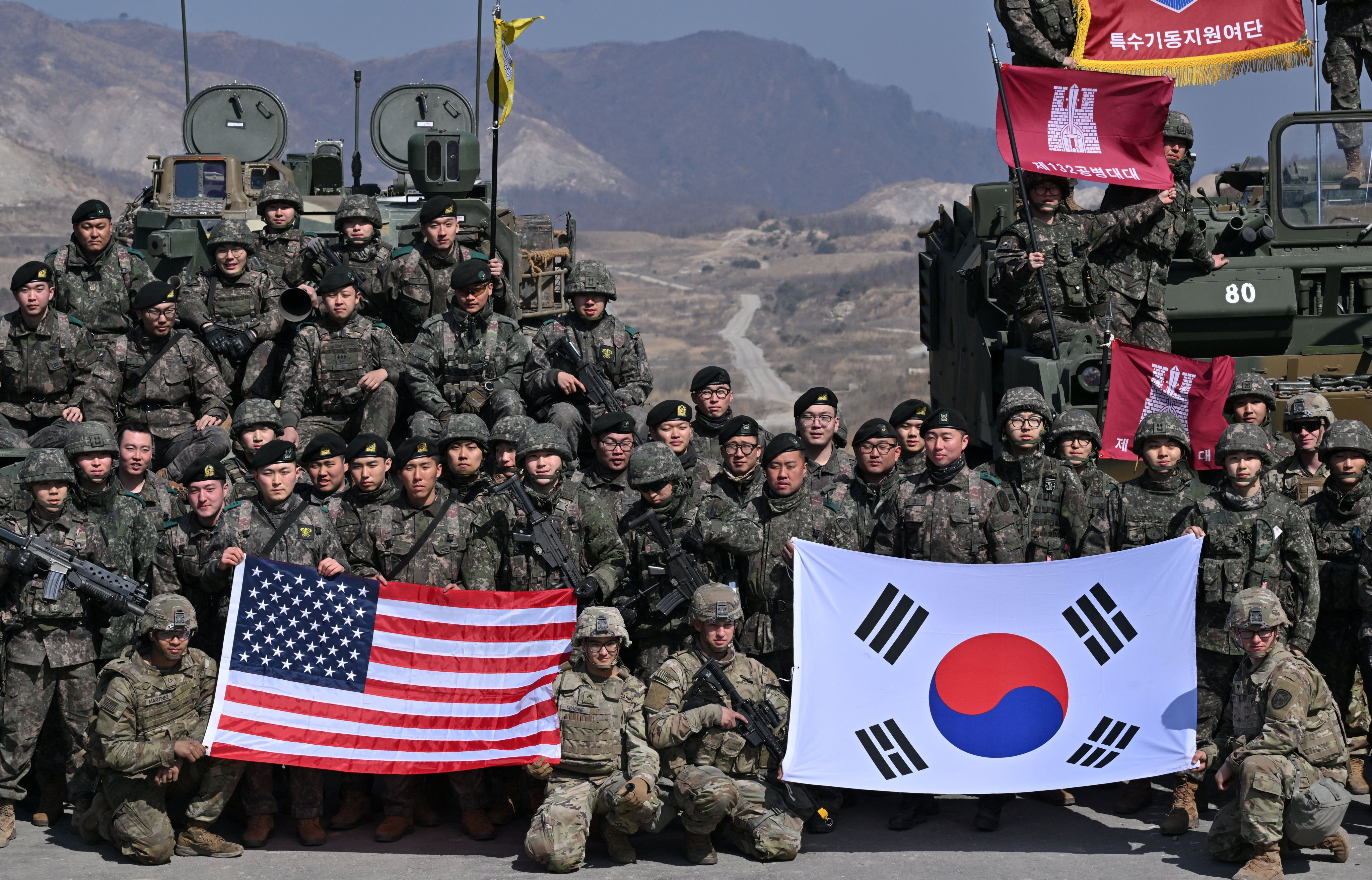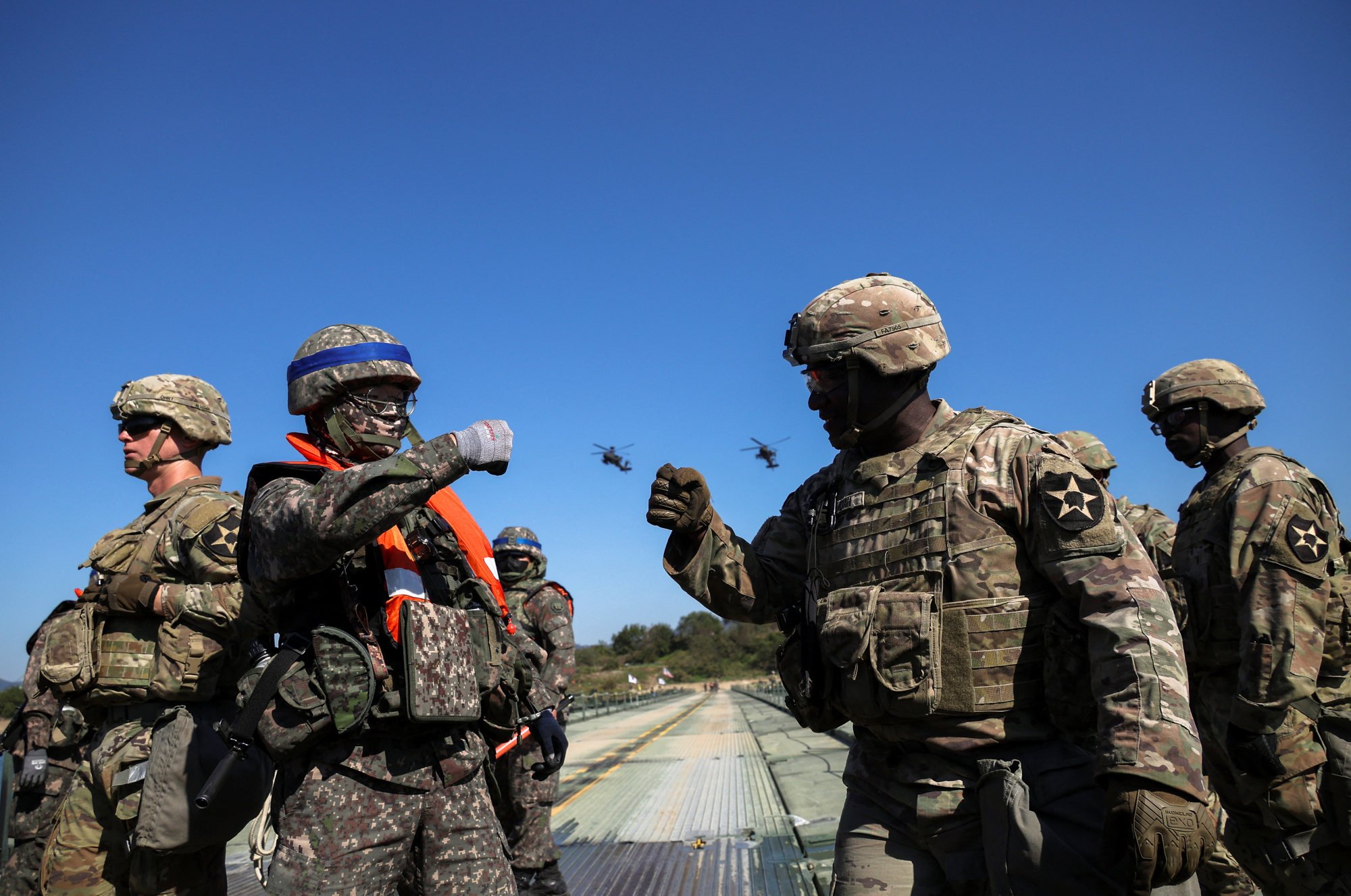Talk of US troop cuts rattles nerves in South Korea ahead of snap election
The Pentagon has denied reports of a drawdown, but analysts say it remains possible given Washington’s shifting defence priorities

Talk of a possible US troop reduction in South Korea is fuelling anxiety in Seoul ahead of the June 3 snap presidential election, with analysts warning that Washington’s shifting defence priorities could reshape the alliance amid rising regional tensions, posing an early test for the next administration.
With just over a week until South Koreans head to the polls, concerns have been reignited over the long-debated issue of “strategic flexibility” – the idea that US Forces Korea (USFK) might be redeployed to respond to regional conflicts beyond the Korean peninsula.
Such a shift, some analysts warn, could erode South Korea’s deterrence posture against North Korea and entangle it in wider US-China rivalries.
The controversy was stirred by a media report last week suggesting Washington was mulling a plan to reassign some 4,500 of its 28,500 troops stationed in South Korea to other Indo-Pacific locations, including Guam. The Pentagon swiftly denied the claim.
“Reports that the Department of Defence will reduce US troops in the Republic of Korea are not true,” chief Pentagon spokesman Sean Parnell told the Wall Street Journal, adding that the United States remained “firmly committed” to South Korea’s defence and to strengthening the “ironclad alliance”.

Still, concerns persist in Seoul that changes could be coming – and not just under the guise of regional flexibility.
Kim Yeoul-soo of the Korea Institute for Military Affairs described the report as an apparent “trial balloon” floated by the Trump administration to gauge South Korea’s reaction.
According to Kim, the potential cutback reflects Washington’s broader efforts to address budget deficits by scaling back its global military presence and shifting greater responsibility for regional security to allies such as South Korea and Japan.
“The answer can be found in the US National Defence Strategy,” Kim told This Week in Asia.
Earlier this month, US Secretary of Defence Pete Hegseth directed Under Secretary of Defence for Policy Elbridge Colby to begin developing the 2025 National Defence Strategy. The strategy will prioritise homeland defence, deterrence of China in the Indo-Pacific, and increased burden-sharing with allies and partners globally.
In February, the Trump administration ordered the Pentagon to identify US$50 billion in cuts from its budget proposal for the next financial year, reallocating funds to other defence priorities, including the development of the “Golden Dome” – an advanced missile defence system inspired by Israel’s Iron Dome.
While speculation around a USFK drawdown has surfaced repeatedly over the years, analysts say this time the discussion is occurring against a different geopolitical backdrop, especially with the spectre of a Taiwan conflict looming larger.
Kim noted that in 2004, the US had already reduced its troop presence in South Korea from 37,000 to the current level of 28,500. If a further cut of 4,500 troops were implemented, it could involve the full withdrawal of a Stryker combat brigade – a mobile armoured unit rotated into South Korea every nine months.
“This would cause a serious defence security issue for South Korea,” Kim warned.

Doo Jin-ho, a senior researcher at the Korea Institute for Defence Analyses, said the issue presented another “serious challenge” for the next South Korean government, which is also tasked with navigating tariff disputes with the Trump administration.
“This issue will resurface quickly when the new government is in place,” Doo said, referring to the snap election triggered by the impeachment of former president Yoon Suk-yeol.
Doo suggested that South Korea might leverage its expertise in shipbuilding and warship maintenance, repair, and operations during negotiations, particularly as the US sought Seoul’s cooperation in bolstering American naval capabilities.
“US authorities are apparently raising this issue before a new South Korean government is in place to gain the upper hand in future negotiations on burden-sharing for US forces in Korea,” Doo said.
He added that Washington might aim to integrate USFK with American forces in Japan under a “one theatre” strategy encompassing the Korean peninsula, the South China Sea and the self-ruled island of Taiwan.
Beijing sees Taiwan as part of China to be reunited by force if necessary. Most countries, including the US, do not recognise Taiwan as an independent state, but Washington opposes any attempt to seize the island by force and is committed to supplying it with weapons.
Lee Jae-myung, presidential front-runner of the reformist Democratic Party of Korea (DPK), said on Monday he would pursue “pragmatic diplomacy centred on national interest” grounded in a “solid” alliance with the US.
“As the strategic rivalry between the US and China intensifies, global security is becoming increasingly unstable,” Lee wrote in a Facebook post.
He also vowed to reinforce the combined South Korea-US defence posture and enhance Washington’s extended deterrence capabilities in response to North Korea’s growing nuclear threat.
DPK spokesman Cho Seung-rae also downplayed partisan differences over USFK, saying on Friday that the American troop presence was vital for deterring North Korea and maintaining peace in Northeast Asia and the wider Pacific.
“On that point, there is no significant difference in opinion between the DPK and the conservative People Power Party, nor is there a major gap in views between South Korea and the US,” he said.
However, Kim Moon-soo, Lee’s closest rival and the People Power Party candidate, warned on Facebook that any troop reduction would send the wrong signal to Pyongyang.
“The issue of reducing US Forces Korea is a grave matter directly linked to South Korea’s security. There are growing concerns that if candidate Lee becomes president, the withdrawal of USFK could become a reality,” Kim said.